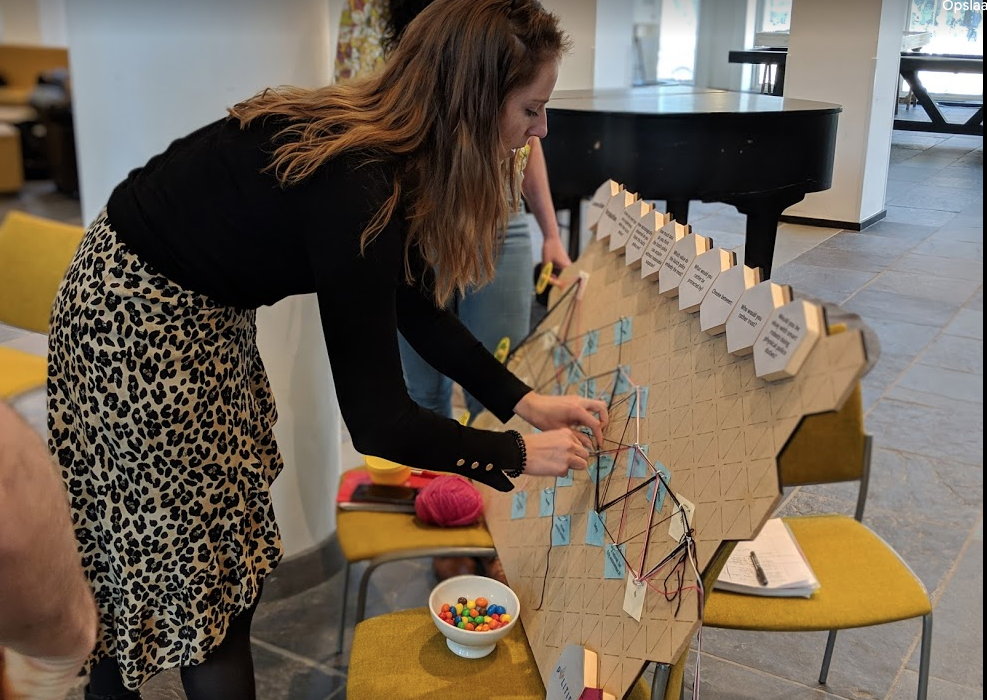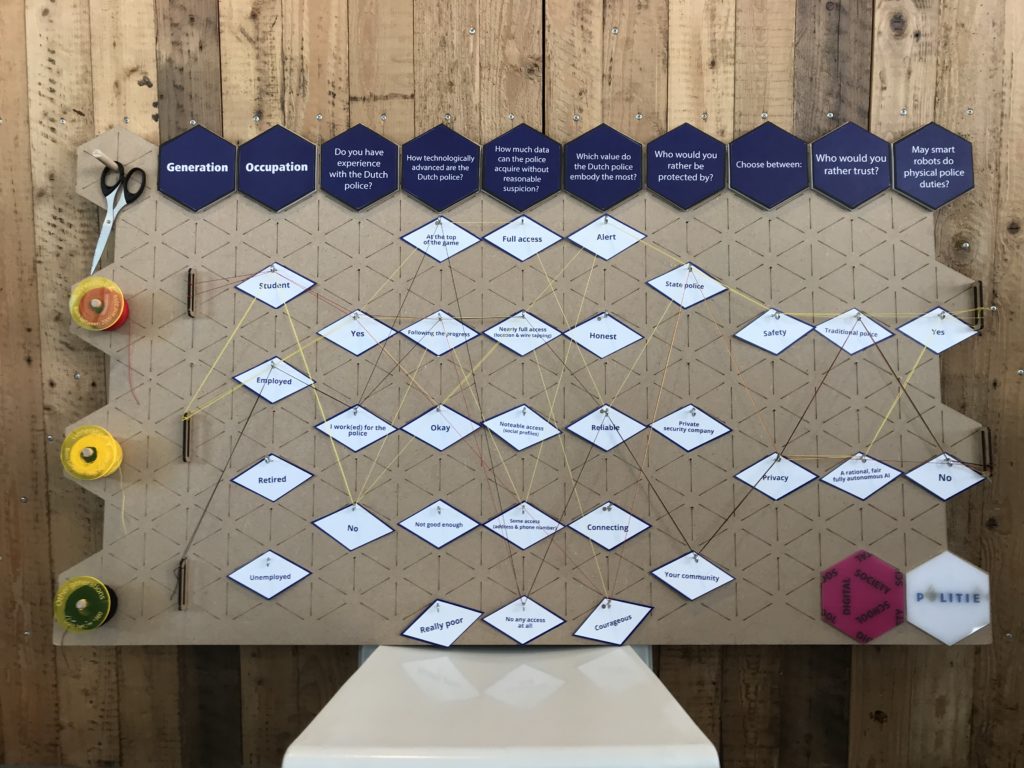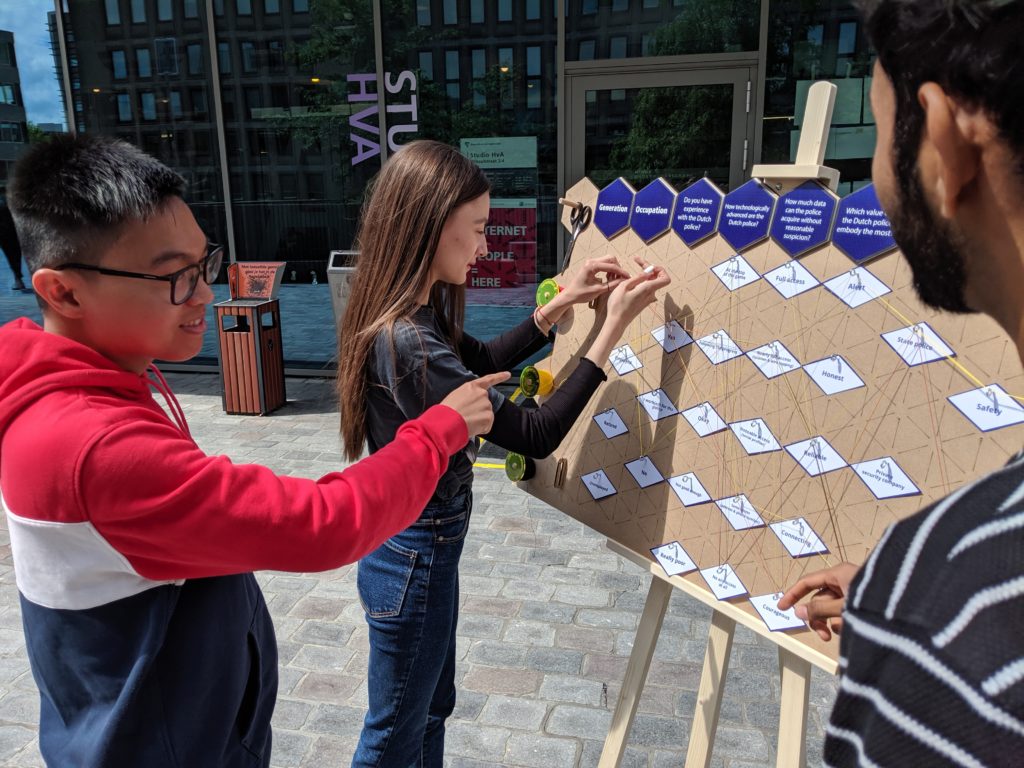
How do people perceive the police?
In order to discuss the future of policing, we have to evaluate the present. The police asked us to gain insights into the opinions that the public has of their work and their ambitions for the future. As opinions can become very broad and vague, we had to find ways to nudge people into the right directions. As qualitative data can also become very extensive, we have tried our best to create a quantitative tool that could also start conversations, thereby enabling us to also gather some qualitative insights.
Inspired by a design from the multidisciplinary design agency Domestic Data Streamers (http://domesticstreamers.com/), we chose to create a data visualization board. The idea is that participants can actively answer questions and over the course of time, questions will accumulate creating patterns of answers. This fun and interactive piece invites people to engage with the survey in a more captivating manner and also provokes a discusion as the most common answers are also already visible on the board.

As our research is focused on digital natives, we chose to use different colors of string for different generations, in particular generation Z (born after 2000) and generation Y (born between 1980 and 2000). From our own perspective it became clear that people’s opinions vary when it comes to their perception of the technological advancements of the police. The same goes for the amount of access the police actually has to our personal data. An interesting dilemma we also gathered from our research is the choice between privacy and safety. It also turned out to be one of the most difficult questions to answer on the board. Looking into alternatives of policing, we also wanted to ask our participants who they would rather trust with their protection and whether or not a smart artificial intelligent system would be a good alternative to the regular police. Lastly we also wanted to test whether people would be comfortable with automatization of several police duties by robots, testing whether this technological advancement is welcome or not.

Our results showed some interesting tendencies in the majority of our audience. The most prolific discussions stemmed from the decision between privacy and safety. Some participants stated that their safety is rarely under threat and therefore they would opt for privacy, as this cannot always be guaranteed in our modern society anymore. Someone else stated that absolute safety cannot be guaranteed and therefore they would choose privacy instead. When coming to the question who they would rather be protected by, many participants chose their community over the police. Many participants also overestimated the amount of access the police has to their personal data without reasonable suspicion. To justify their decision against smart robots for automatization of police tasks, some participants argued that they need a human element to invoke trust. In terms of values that the police represents, some participants stated that they regard the police as reliable, but not always very helpful.
Over time we experimented with different materials to create the questions and answers tags and to fasten the materials to the board. We also changed the phrasing of the questions and answers after some testing for clarity.